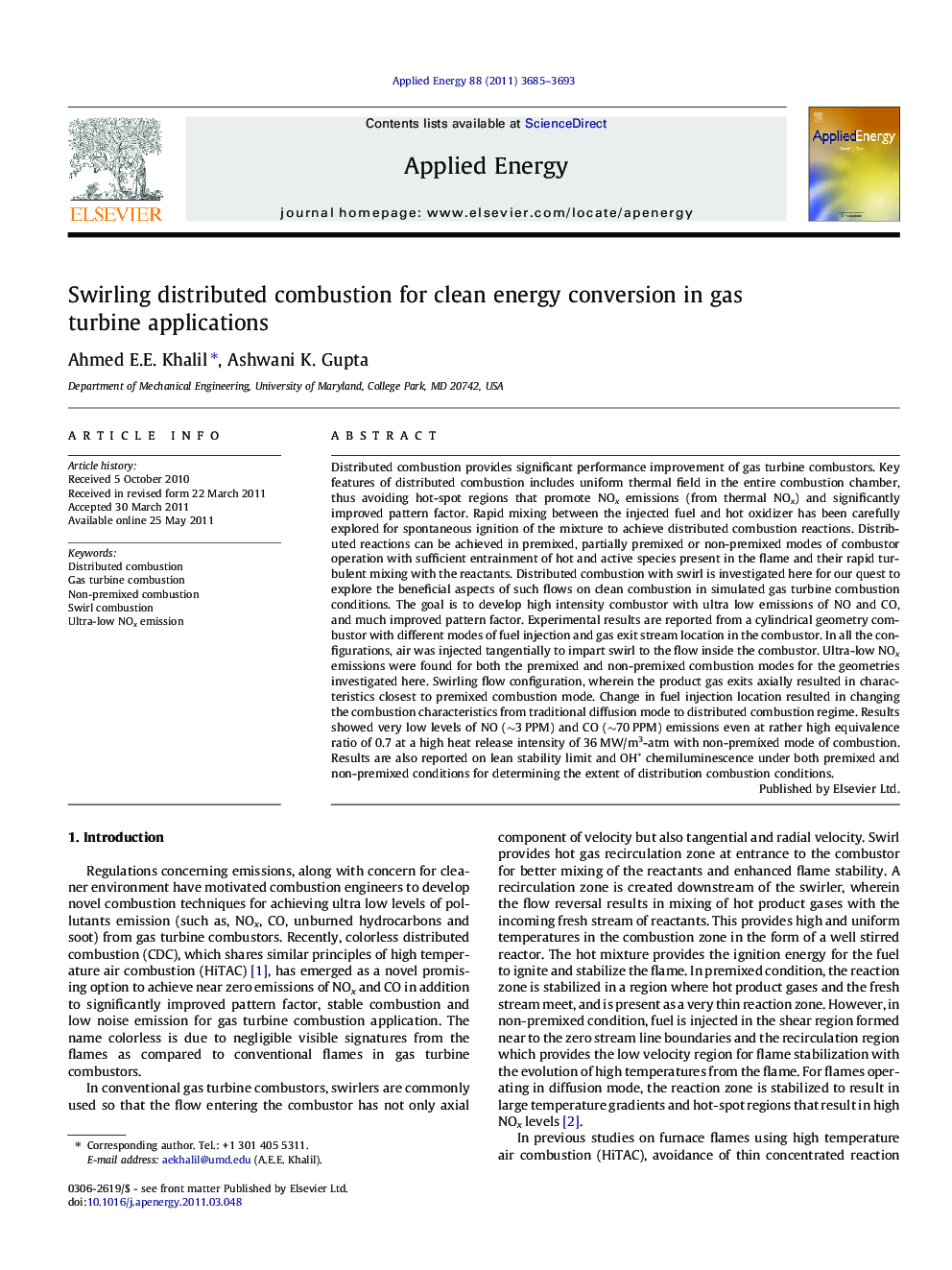| کد مقاله | کد نشریه | سال انتشار | مقاله انگلیسی | نسخه تمام متن |
|---|---|---|---|---|
| 244176 | 501944 | 2011 | 9 صفحه PDF | دانلود رایگان |

Distributed combustion provides significant performance improvement of gas turbine combustors. Key features of distributed combustion includes uniform thermal field in the entire combustion chamber, thus avoiding hot-spot regions that promote NOx emissions (from thermal NOx) and significantly improved pattern factor. Rapid mixing between the injected fuel and hot oxidizer has been carefully explored for spontaneous ignition of the mixture to achieve distributed combustion reactions. Distributed reactions can be achieved in premixed, partially premixed or non-premixed modes of combustor operation with sufficient entrainment of hot and active species present in the flame and their rapid turbulent mixing with the reactants. Distributed combustion with swirl is investigated here for our quest to explore the beneficial aspects of such flows on clean combustion in simulated gas turbine combustion conditions. The goal is to develop high intensity combustor with ultra low emissions of NO and CO, and much improved pattern factor. Experimental results are reported from a cylindrical geometry combustor with different modes of fuel injection and gas exit stream location in the combustor. In all the configurations, air was injected tangentially to impart swirl to the flow inside the combustor. Ultra-low NOx emissions were found for both the premixed and non-premixed combustion modes for the geometries investigated here. Swirling flow configuration, wherein the product gas exits axially resulted in characteristics closest to premixed combustion mode. Change in fuel injection location resulted in changing the combustion characteristics from traditional diffusion mode to distributed combustion regime. Results showed very low levels of NO (∼3 PPM) and CO (∼70 PPM) emissions even at rather high equivalence ratio of 0.7 at a high heat release intensity of 36 MW/m3-atm with non-premixed mode of combustion. Results are also reported on lean stability limit and OH* chemiluminescence under both premixed and non-premixed conditions for determining the extent of distribution combustion conditions.
► Examined distributed combustion for high intensity ultra low emission combustion.
► New flames mode alleviates hot-spot zones for mitigating high thermal NOx.
► Different fuel and air injection locations and gas exit arrangements examined.
► Demonstrated stable combustion at high intensities of up to 36 MW/m3-atm.
► Demonstrated less than 3 PPM NO for non-premixed and 2 PPM for premixed flames.
Journal: Applied Energy - Volume 88, Issue 11, November 2011, Pages 3685–3693